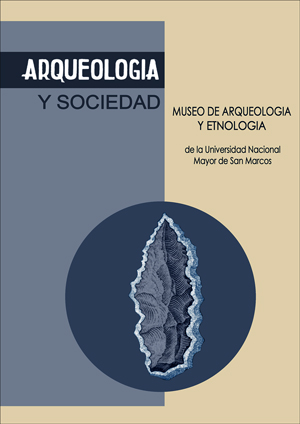SAN HUMBERTO: UN SITIO FORMATIVO EN EL VALE DEL CHILLÓN
DOI:
https://doi.org/10.15381/arqueolsoc.1970n2.e12800Abstract
A partir del segundo semestre de 1969, el Museo de Arqueología y Etnología de la Universidad de San Marcos inició el reconocimiento del Valle del Chillón, desde la desembocadura del río hasta el kilómetro 60 de la carretera que conduce a Canta, y durante esta exploración se ha podido ubicar algunos sitios inéditos, entre los cuales figura el Conjunto San Humberto, el que presenta notables características que lo ubican cronológica y culturalmente en el periodo Formativo. Este conjunto enriquece las evidencias del Formativo en la Costa Central, pues los más conocidos, hasta el momento, son: Ancón, Garagay, Lurín, La Florida y Curayacu, además de las noticias verbales dadas por José Casafranca de algunas colecciones de superficie procedentes del área cercana a la G.U.E. “Bartolomé Herrera”, Maranga, Parque de las Leyendas, Cuevas, así como de algunos sitios cercanos al aeropuerto internacional.Downloads
Published
Issue
Section
License
Copyright (c) 1970 Hugo Ludeña

This work is licensed under a Creative Commons Attribution-NonCommercial-ShareAlike 4.0 International License.
THE AUTHORS RETAIN THEIR RIGHTS:
a. The authors retain their trademark and patent rights, and also on any process or procedure described in the article.
b. The authors retain the right to share, copy, distribute, perform and publicly communicate the article published in the Arqueología y Sociedad (for example, place it in an institutional repository or publish it in a book), with an acknowledgment of its initial publication in the Arqueología y Sociedad.
c. The authors retain the right to make a subsequent publication of their work, to use the article or any part of it (for example: a compilation of their works, notes for conferences, thesis, or for a book), provided that they indicate the source. of publication (authors of the work, journal, volume, number and date).






